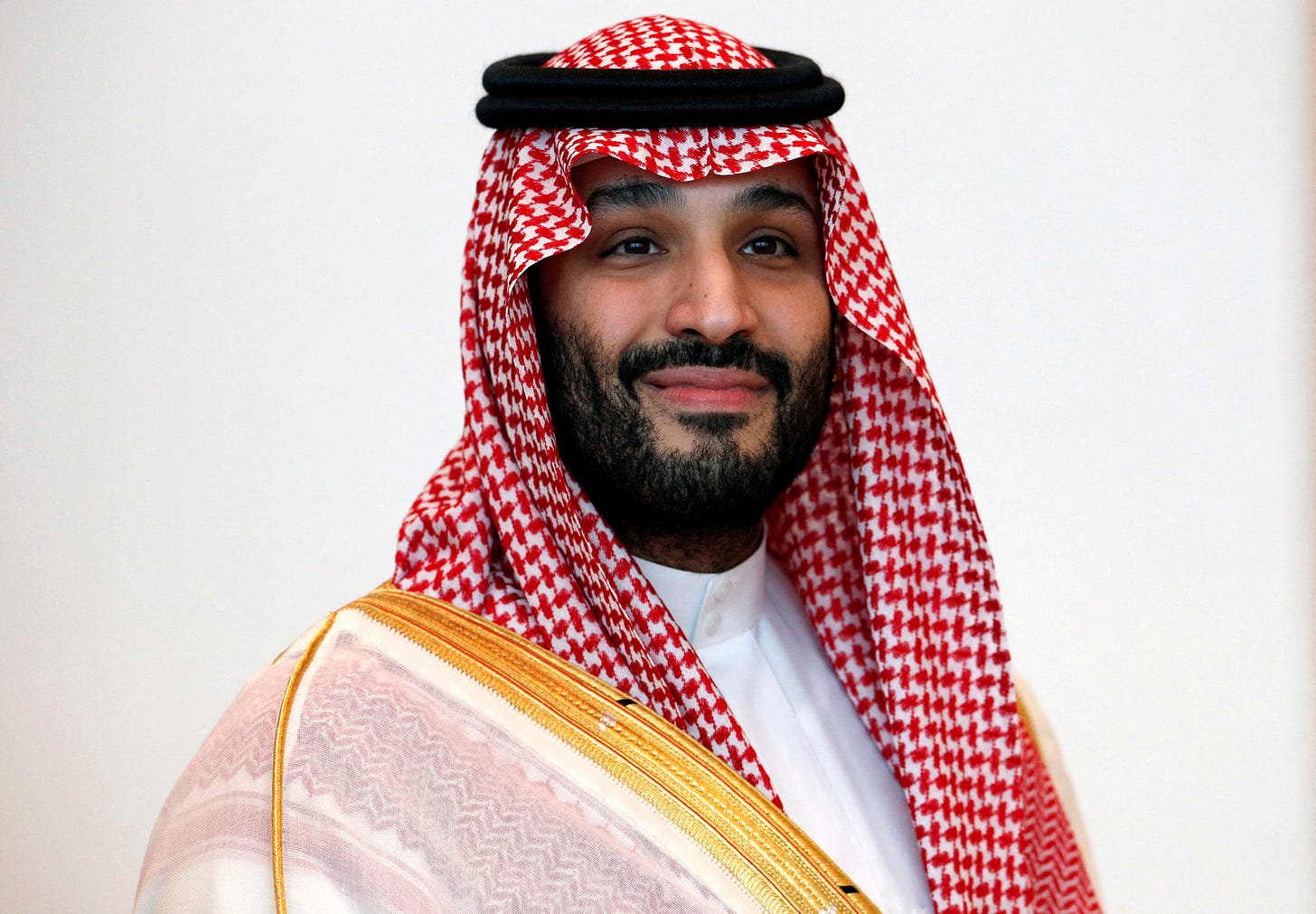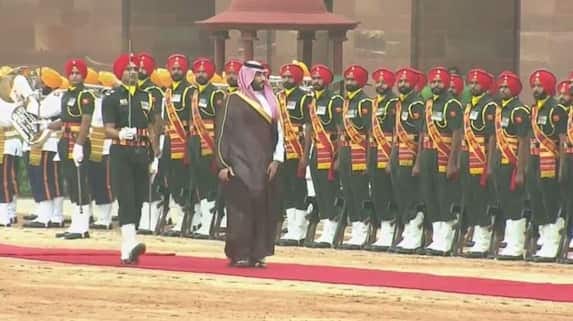The $450 Million Masterpiece: Saudi Crown Prince's Game-Changing Art Purchase
The Saudi Crown Prince Mohammed bin Salman (MBS) Created Global Waves with the Acquisition of Leonardo da Vinci's Priceless 'Salvator Mundi' in a Pulsating Christie's Auction.
The Priceless Masterpiece
An electrifying moment at a Christie's auction shook the global art world in November 2017. A painting depicting Jesus Christ as the "Saviour of the World," attributed to Leonardo da Vinci, fetched a record-breaking $450.3 million. However, the excitement wasn't just about the astronomical price. The real revelation came days later when it emerged that the buyer was none other than Saudi Arabia's Crown Prince Mohammed bin Salman (MBS). The acquisition of Salvator Mundi was far from an ordinary art transaction; it was a monumental statement, both artistically and geopolitically.
What Makes Salvator Mundi So Special?
The painting, dating back to around 1500, depicts Jesus Christ holding a crystal orb in one hand while blessing the world with the other. While its attribution to Leonardo da Vinci has been debated, its mystique and historical significance make it a coveted masterpiece. At the time of its sale, Salvator Mundi became the most expensive artwork ever sold at auction, commanding global headlines and solidifying its status in art history.
The Auction: A Battle of Billionaires
The night of the auction was nothing short of a thriller. Bidding for Salvator Mundi started at $90 million, but after a tense 19-minute battle, the final price soared to $450.3 million. In a masterclass of auction theatrics, only two individuals were left in the bidding war, orchestrated by the expert auctioneer Loïc Gouzer. The final bid came from Prince Bader bin Abdullah, an intermediary for MBS, outbidding another Arab prince by a jaw-dropping $30 million leap to secure the artwork.
Why Did MBS Buy It?
1. Cultural Prestige
For a nation keen on projecting itself as a global power beyond its oil wealth, owning such a significant piece of Renaissance art elevates Saudi Arabia's cultural profile. The purchase aligns with Vision 2030, MBS's ambitious plan to diversify Saudi Arabia's economy, which includes boosting the arts and cultural sectors.
2. Investment Potential
Art has long been a haven for wealthy investors, and owning a Leonardo da Vinci painting is akin to possessing a blue-chip asset. The potential long-term value of Salvator Mundi makes it not just a cultural but also a financial trophy.
3. Personal Taste
MBS, a known lover of luxury and status symbols, may have had a personal fascination with Renaissance art, specifically with a painting that merges divine symbolism with global fame.
4. Soft Power Diplomacy
Given that Salvator Mundi is a Christian religious painting, owning it might be a strategic nod towards religious tolerance, signaling to the West that Saudi Arabia is evolving in its approach to global diplomacy and intercultural relations.

The Mystery: Where is Salvator Mundi Now?
Since its record-breaking purchase, the whereabouts of Salvator Mundi remain shrouded in mystery. Several reports suggest that the painting could be on MBS's luxury yacht, while others speculate that it may be in storage, awaiting public display. This absence from the public eye has only fueled rumours and speculations, raising several intriguing possibilities:
1. Authentication Questions
Despite its purchase price, doubts about the painting's authenticity have persisted. Some art historians question whether it is a true Leonardo, or simply a work from his workshop. Such debates could be why the painting hasn't made a grand public appearance yet.
2. Security Concerns
A $450 million artwork is no ordinary possession. Its immense value demands extraordinary security measures, and it's possible that the painting is being stored in a climate-controlled facility for its protection.
3. Political and Religious Sensitivities
Displaying a Christian painting in the heart of a conservative Islamic kingdom might stir controversy. It’s plausible that MBS is waiting for the right moment or venue to reveal the painting in a way that aligns with Saudi Arabia's shifting cultural policies.
The Rediscovery of Salvator Mundi
Salvator Mundi, attributed to the legendary Leonardo da Vinci, is a painting that has captured the imagination of the art world. Thought to have been painted around 1500, it depicts Christ holding a crystal orb, symbolising the heavens, while offering a blessing with his right hand. For centuries, this masterpiece was considered lost, its existence known only through references. It reappeared in the early 20th century, heavily overpainted and misattributed to one of Leonardo’s followers, blending into the shadows of art history until its rediscovery in 2005.
Restoration and Controversy
The painting was purchased for a mere $1,175 at a small auction in New Orleans, and its new owners undertook a careful restoration. As layers of overpainting were stripped away, experts were stunned to find traces of Leonardo’s technique. Pentimenti—alterations made during the painting process—became visible, indicating the work of a master rather than a copyist. However, the restoration process itself stirred debate. Critics argue that the extensive restoration has compromised the painting’s authenticity, but the majority of art historians consider it a genuine Leonardo. It was featured in the National Gallery’s 2011 Leonardo exhibition, marking its re-entry into the art world.
The Record-Breaking Sale and Its Uncertain Fate
In 2017, Salvator Mundi was auctioned at Christie’s, where it fetched an astounding $450.3 million, becoming the most expensive painting ever sold. Initially reported to have been purchased for the Louvre Abu Dhabi, it was later revealed that Crown Prince Mohammed bin Salman of Saudi Arabia was the true buyer. Since the sale, the painting’s whereabouts have been the subject of speculation, with some reports suggesting it may be in storage, while others hint it could be aboard MBS’s luxury yacht. Plans are underway to display the masterpiece in a museum being developed in Al-'Ula, where it may finally be unveiled to the world.
What’s Next for Salvator Mundi?
1. Museum Display
There have been rumours that Salvator Mundi might eventually find its way to Saudi Arabia’s forthcoming cultural landmarks, such as the new museums being developed as part of Vision 2030. If displayed, it could become a magnet for global tourists and art aficionados, boosting Saudi Arabia’s soft power.
2. Private Collection
Alternatively, the painting may remain part of the Crown Prince's private collection, a personal symbol of his broader ambitions. In this scenario, Salvator Mundi could become a piece of intrigue, sparking occasional media stories but largely hidden from the public.
3. Loan to Global Institutions
Another option is to lend the painting to prestigious art institutions worldwide. By doing so, Saudi Arabia could strengthen its diplomatic and cultural ties with major powers, reinforcing its commitment to the arts while gaining global goodwill.
The Lasting Impact
Whether displayed in a museum or kept on a yacht, the purchase of Salvator Mundi by MBS has already left an indelible mark on both the art world and international geopolitics. This monumental sale redefined what it means to own a piece of history, and it set a new bar for the power dynamics involved in high-stakes art auctions. MBS's acquisition of a Christian religious icon as part of his broader Saudi reform narrative is an audacious move, intertwining culture, religion, and political strategy.
Conclusion: More than Just a Painting
Ultimately, Salvator Mundi is more than just a Renaissance masterpiece; it is a symbol of a nation’s ambitions, a young leader’s bold vision to reshape his country's image, and a $450 million puzzle whose final pieces are still coming into place. Crown Prince Mohammed bin Salman, often seen as a reformist, is ushering in changes that were unthinkable just a few years ago, such as allowing women to drive—a significant step forward in arguably the most conservative of Islamic nations. Saudi Arabia, home to Mecca and Medina, two of the holiest cities in Islam, is now under the leadership of a man determined to push boundaries, modernise the kingdom, and assert it as a global cultural and economic force. In many ways, MBS is a more fitting owner of this timeless masterpiece than an anonymous billionaire from the United States or Europe. His ownership of Salvator Mundi aligns with his transformative agenda, making the painting not just a work of art, but a powerful statement in the evolving narrative of Saudi Arabia and its role on the world stage.
Citations
[1] CBS News: Salvator Mundi Auction
[2] The Art Newspaper: Salvator Mundi NFT Return
[3] Artnet: The Last Known Leonardo
[4] Indian Express: Behind the Art - Salvator Mundi
[5] SCMP: Most Expensive Paintings Ranked
[6] Middle East Monitor: Saudi Crown Prince’s $0.5bn Purchase
[7] Luxury Launches: Salvator Mundi Payment Details





